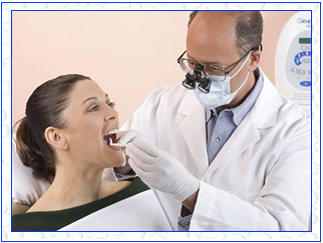Home > Maths in Action > Resources > Activities > Fermi > Estimation: dentists
Estimation: dentists
Problem Stimulus: Waiting lists continue to grow
More than 1200 Toowoomba patients are waiting longer than five years for general dental work through the public health system.
Figures show queues in Toowoomba has reached a 5088 patient peak, some waiting more than six years to see a dentist.
Estimate how many dentists are needed in the city of Toowoomba. Now? In approximately 20 years (2031)?
- What key quantities would we need to include in a mathematical relationship to enable us to estimate the number of dentists needed to service a population like Toowoomba?
- What key assumptions do we need to make?
- What are some defensible numerical values associated with these assumptions?
- How sensitive are our estimates to these assumptions?
- How would changes in circumstances (decide which?) affect the estimates?
http://www.thechronicle.com.au/news/dental-waiting-list-continues-to-grow/1623901/
Possible Approach
Choose the time period for focus (e.g. week, month, year…) choose YEAR
Needed information: (identification of key variables)
- dentally relevant population (Pd )
- average visits per year per person (n)
- average duration of a visit (d)
- typical hours worked by dentists (h)
Taking a year as the focus:
Number of dentists (N) = population (dentally relevant) x no of visits/person x length of visit/hours worked:
N = Pd x n x d/h
Need to keep track of units as the answer is dimensionless.
Now quantities need to be researched and/or sensibly estimated which will involve making defensible assumptions.
The internet is handy for these purposes. For this example a search identified the following information of relevance – no need for Goldilocks in this case?
Population
http://www.thechronicle.com.au/news/city-prepares-manage-explosion-population/283222/
An extra 75 000 people are expected to call Toowoomba home by 2031. This is a prediction for the future growth in the Toowoomba region released in the South East Queensland Regional Plan 2009-2031. The population of Toowoomba is expected to grow to about 197 000 by 2031 requiring an additional 31 000 dwellings.
Hours worked
An average of 1700 to 1800 hours per year is worked by individual dentists according to the findings of a research project (2008).
Survey findings
http://www.thechronicle.com.au/news/toowoomba-residents-avoid-dentist-due-hip-pocket/1609590/
- 65% of Toowoomba residents avoid the dentist due to cost
- 60% of Queensland residents and 65% of Toowoomba residents have no plans to visit a dentist for at least 12 months, and 12% for at least two years
- 78% of those with health insurance remain concerned about their dental fees
- 5% of Toowoomba residents avoid the dentist due to fear, compared to 8% of New South Wales and 10% of Victoria residents
- Over 67 000 Queenslanders participated in the survey, including over 5000 from Toowoomba
What estimates are obtained? How sensitive are these to assumptions etc?
If instead we rely on ‘gut level’ estimates and use the Goldilocks principle are the outcomes in the same ball park?
References
Adam, John, A. (2003). Mathematics in Nature: Modeling Patterns in the Natural World. Princeton: Princeton University Press.
Arleback, Jonas. (2009). On the use of Realistic Fermi problems for introducing mathematical modelling in school. The Montana Mathematics Enthusiast, 6 (3), 331 -364

